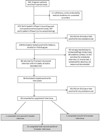Pregnant Women's Access to Information About Perinatal Marijuana Use: A Qualitative Study
- PMID: 27131908
- PMCID: PMC4958505
- DOI: 10.1016/j.whi.2016.03.010
Pregnant Women's Access to Information About Perinatal Marijuana Use: A Qualitative Study
Abstract
Background: Marijuana is the most commonly used illicit substance in pregnancy. Little is known about how pregnant women who use marijuana obtain and understand information about perinatal marijuana use. We conducted a qualitative study among pregnant women who had used marijuana to understand their information-seeking patterns and perceptions of usefulness of available information about perinatal marijuana use.
Study design: We conducted semistructured interviews with 26 pregnant women who were receiving prenatal care and who either disclosed marijuana use or had urine samples testing positive for marijuana. Interviews assessed women's sources of information about risks of perinatal marijuana use and perceptions regarding the usefulness of such information. Interview data were coded independently by two coders who iteratively refined the codes and reviewed transcripts for themes.
Results: Commonly reported sources of information about perinatal marijuana use included Internet searching and anecdotal experiences or advice from family or friends. Few women reported receiving helpful information from a health care provider or social worker. Women perceived a lack of evidence about harms of perinatal marijuana use, and reported being dissatisfied with the quality of information. Most women said they desired information about the effects of perinatal marijuana use on infant health.
Conclusions: Women who used marijuana before or during pregnancy did not find available information about perinatal marijuana use to be useful, and sought more information pertaining to infant health and well-being. Efforts to reduce perinatal marijuana use should focus on addressing this need in both clinical and public health settings.
Copyright © 2016 Jacobs Institute of Women's Health. Published by Elsevier Inc. All rights reserved.
References
-
- American College of Obstetricians and Gynecologists Committee on Obstetrc Practice. Committee Opinion No. 637: Marijuana Use During Pregnancy and Lactation. Obstet Gynecol. 2015;126(1):234–238. - PubMed
-
- Bada HS, Das A, Bauer CR, Shankaran S, Lester BM, Gard CC, Higgins R. Low birth weight and preterm births: etiologic fraction attributable to prenatal drug exposure. J Perinatol. 2005;25(10):631–637. - PubMed
Publication types
MeSH terms
Grants and funding
LinkOut - more resources
Full Text Sources
Other Literature Sources
Medical


